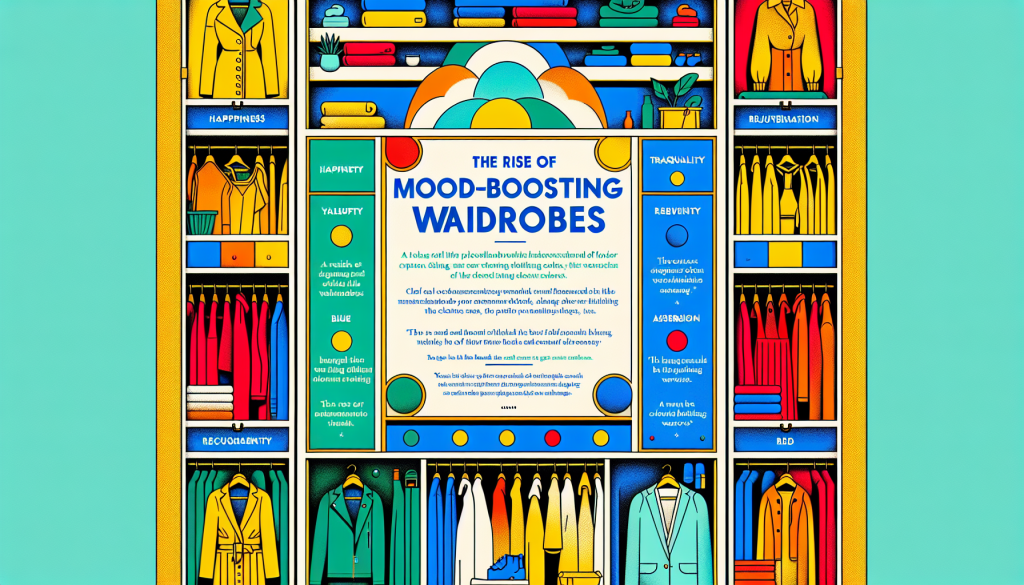
Color Psychology in Clothing: The Rise of Mood-Boosting Wardrobes
The power of color psychology in clothing has gained significant attention in recent years, with people turning to their wardrobes not just for fashion, but also for emotional support. This trend of mood-boosting wardrobes is a result of the growing awareness of the impact of colors on our state of mind. By understanding the psychology behind colors, people are now using clothing as a form of self-expression and a tool for enhancing their mood.
The Influence of Colors on Mood
As humans, we have a natural response to colors and they can evoke different emotions within us. This is because colors have the ability to stimulate certain chemicals in our brain, affecting our mood and behavior. For example, warm colors like red and orange are associated with energy and excitement, while cool colors like blue and green are known for their calming and soothing effects.
When it comes to clothing, our choice of colors also reflects our inner emotions. A person wearing bright and vibrant colors is likely looking to enhance their positive mood, whereas someone clad in neutral or dark colors may be feeling more low-key or even sad.
The Rise of Mood-Boosting Wardrobes
With the increasing awareness of color psychology, people are now paying more attention to the colors they wear and how it affects their mood. This has led to the rise of mood-boosting wardrobes, where people intentionally choose colors that can positively impact their emotions.
For instance, wearing yellow can promote positivity and optimism, while green can evoke feelings of harmony and balance. On the other hand, black is commonly associated with power and success, and can boost one’s confidence. By incorporating these colors into their wardrobes, people are subconsciously reaping the benefits of color psychology.
Moreover, the fashion industry has also caught onto this trend, with many brands launching collections specifically focused on mood-boosting colors. These collections not only offer a variety of options in terms of color, but also incorporate comfortable and trendy designs, making people feel good both inside and out.
The Impact on Overall Well-Being
In addition to influencing our mood, color psychology in clothing also has a direct impact on our overall well-being. For instance, colors can affect our energy levels and even our appetite. Bright and bold colors can increase energy levels and stimulate metabolism, whereas cooler colors can have a calming effect and reduce appetite.
Furthermore, the act of intentionally choosing mood-boosting colors can have a positive effect on our mindset. By putting on a color that represents happiness or confidence, we are setting ourselves up for a good day and boosting our self-esteem.
The Future of Mood-Boosting Wardrobes
The rise of mood-boosting wardrobes is not just a passing trend, but a reflection of our constant need to improve our mental and emotional well-being. As people continue to prioritize self-care and wellness, incorporating color psychology in clothing will become a norm and an essential aspect of personal style.
In addition, with the current global health crisis, the importance of mental health and self-care has never been more prevalent. People are now seeking ways to uplift their mood and boost their well-being, and mood-boosting wardrobes provide a simple yet effective solution.
Conclusion
In conclusion, color psychology in clothing has undoubtedly played a significant role in the rise of mood-boosting wardrobes. By understanding the influence of colors on our emotions and making a conscious effort to incorporate mood-boosting colors into our wardrobes, we are not only enhancing our style, but also taking care of our mental and emotional well-being. So, next time you reach for your wardrobe, consider the power of color psychology and choose a color that will not only make you look good, but feel good too.
